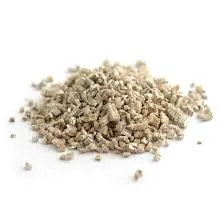Dec . 30, 2024 05:03 Back to list
Enhancing Carbon Content with Graphite Recarburizer for Superior Steel Production
Understanding Graphite Recarburizer A Key Component in Steelmaking
In the world of steelmaking and foundry operations, the term recarburizer plays a crucial role in determining the quality and properties of the final product. Among various types of recarburizers available, graphite recarburizer stands out for its unique characteristics and benefits. This article delves into the importance of graphite recarburizers in metallurgy, their properties, production methods, and applications.
What is Graphite Recarburizer?
Graphite recarburizer is a carbon-rich material primarily used to increase the carbon content in molten steel or iron during the smelting process. The main purpose of adding recarburizers is to achieve the desired carbon levels required for specific metallurgical properties, which directly influence the hardness, strength, and ductility of the final steel product. Graphite, being an excellent conductor of heat and electricity, makes it an ideal choice for this purpose.
Properties of Graphite Recarburizers
Graphite recarburizers are characterized by high fixed carbon content (typically over 90%), low sulfur and ash content, and excellent thermal stability. These properties ensure that the addition of graphite leads to minimal contamination of the molten steel while effectively raising its carbon levels. Moreover, the use of graphite recarburizer facilitates a higher melting point, which allows the steel to maintain its integrity during extreme conditions.
One of the significant advantages of graphite as a recarburizer is its ability to provide a uniform carbon distribution within the molten metal. Unlike other forms of carbon, such as petroleum coke or charcoal, graphite can effectively dissolve in molten metal without creating large carbides that can negatively impact the steel's mechanical properties.
Production of Graphite Recarburizers
Graphite recarburizers are typically produced from petroleum or natural graphite through various manufacturing processes. The production process includes crushing, milling, and filtering to achieve the required particle size and purity. Some manufacturers use a process known as graphitization, where carbon materials are subjected to high temperatures (above 3000 degrees Celsius) to enhance their graphite structure and properties.
graphite recarburizer

Quality control is a critical aspect of graphite recarburizer production. Manufacturers must ensure that the recarburizer meets strict quality parameters for fixed carbon, sulfur, and ash content. The higher the quality of the recarburizer, the better the quality of the steel produced.
Applications in Steelmaking
Graphite recarburizers are widely used in various steel production methods, including Electric Arc Furnace (EAF) steelmaking, induction furnaces, and cupola furnaces. In EAF operations, the recarburizer is added directly to the molten bath to adjust the carbon content. This process is often more cost-effective than using high-carbon scrap steel, which can sometimes introduce unwanted impurities.
In addition to steelmaking, graphite recarburizers find applications in the production of cast iron, where precise carbon control is essential for achieving desired characteristics. Foundries also use them to enhance the carbon content in the iron, allowing for improved casting properties and surface finishes.
Environmental Considerations
As industries increasingly prioritize sustainable practices, the use of graphite recarburizers presents several advantages. Graphite is often derived from recyclable resources, reducing the overall carbon footprint associated with steel production. Furthermore, the efficient use of graphite allows for lower emissions compared to traditional carbon additives, making it a more environmentally friendly option.
Conclusion
In summary, graphite recarburizers serve as a vital ingredient in the steelmaking process, enabling manufacturers to produce high-quality steel with desired mechanical properties. The unique properties of graphite, including its high fixed carbon content and excellent thermal stability, make it an ideal choice for enhancing carbon levels in molten metal. With advances in manufacturing processes and a growing focus on sustainability, graphite recarburizers are poised to play an even more significant role in the metalworking industry. As the demand for high-performance materials continues to rise, understanding and utilizing graphite recarburizers will remain essential for achieving optimal results in metal production.
-
Eco-Friendly Granule Covering Agent | Dust & Caking Control
NewsAug.06,2025
-
Fe-C Composite Pellets for BOF: High-Efficiency & Cost-Saving
NewsAug.05,2025
-
Premium Tundish Covering Agents Exporters | High Purity
NewsAug.04,2025
-
Fe-C Composite Pellets for BOF | Efficient & Economical
NewsAug.03,2025
-
Top Tundish Covering Agent Exporters | Premium Quality Solutions
NewsAug.02,2025
-
First Bauxite Exporters | AI-Optimized Supply
NewsAug.01,2025
